Bath and laundry factories — brothels or "purity factories" in which the Great Victory was forged?
Categories: History
By Pictolic https://pictolic.com/article/bath-and-laundry-factories-brothels-or-purity-factories-in-which-the-great-victory-was-forged.htmlBlistered to bloody calluses, fingers that do not bend from arthritis, skin corroded by lye and tons of laundry. Such were the everyday lives of women from the bath and laundry detachments. For each Red Army soldier, three kilograms of underwear were washed per week. The number of the army, including the NKVD troops and other paramilitary structures, by the beginning of 1945 was about 14 million people ... Warhead magazine recalls the everyday life of ordinary Soviet laundresses during the Great Patriotic War.
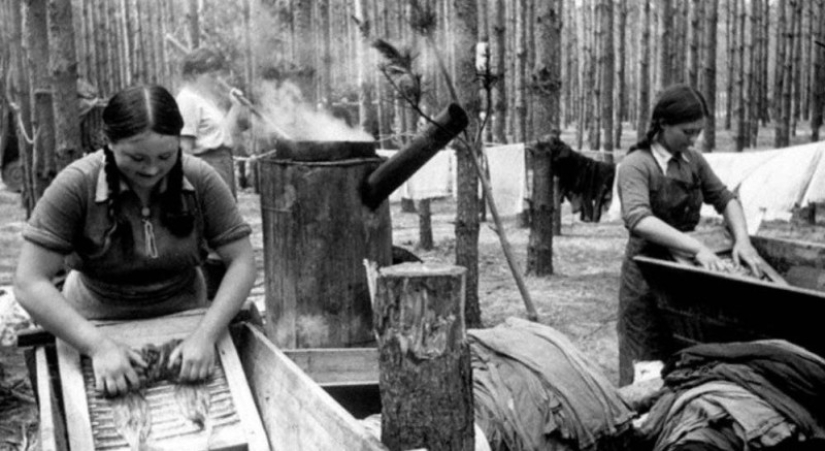
What you won't read on the web. Over the past twenty years, you can find a lot of far-fetched dirty details about the Great Patriotic War. For example, that brothels operated at the front under the cover of bath and laundry detachments. Here is a quote from one such opus:
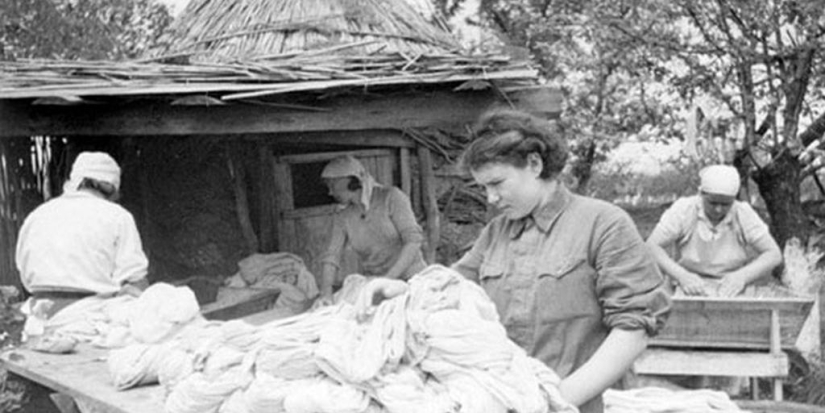
To feel the absurdity of the idea, imagine that instead of radio operators, disguised DJs went to the front and put on music. To the reasonable question "How to fight, without communication?" the authors of such materials answer that entertainment is more important. So it happened in the case of laundresses. In fact, no military commander would have exchanged a bath and laundry squad for a brothel for any price.
Cleanliness at the front is a matter of extreme importance. If you don't wash your clothes, then unsanitary conditions and lice will instantly turn the army into a bunch of sick and smelly ragamuffins. According to the standard, soldiers went to the bathhouse once a week, if possible, and once a week they received clean underwear — long johns, a shirt and footcloths.
For each Red Army soldier, three kilograms of laundry were washed per week. Quilted jackets and overcoats were also washed, but less often.
It was extremely important to clean field hospitals. Sheets, rags, bandages were washed for them… When there were not enough dressing materials, the already used ones were bleached and boiled. In addition, all clothes from the wounded had to be disinfected and washed of blood.
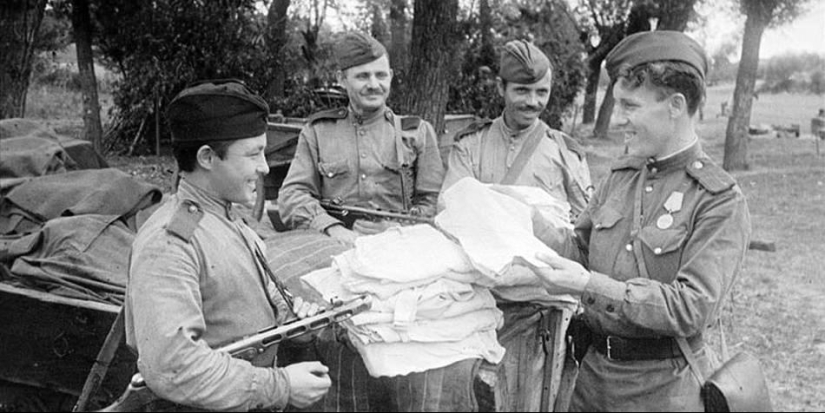
There are data from the Soviet-Finnish war. During the period of hostilities, linen was washed for the troops that became part of the North-Western Front:
Just think about it, thousands of tons. At the same time, there were no automatic cars at that time. There were manual ones that required turning the handle to turn the drum with the laundry laid there. Up to twenty pairs of laundry could be washed in one washing session, while it was required to turn the drum manually for an hour. Then pull out the laundry, squeeze it by hand, hang it to dry. Then again the boiling water and again the laundry. When such machines did not work, the laundry was washed by hand. In the basin or on the catwalk. All those thousands of pairs of underwear.
Do not forget about the lack of normal means for washing and processing. At first, the laundry was soaked in kerosene to destroy the larvae of lice — nits.
The main means were boiling, bleach and lye — an aqueous solution of wood ash. Lye consists mainly of potash — potassium carbonate — and soda. It is characterized by a highly alkaline reaction and mercilessly corrodes the hands.
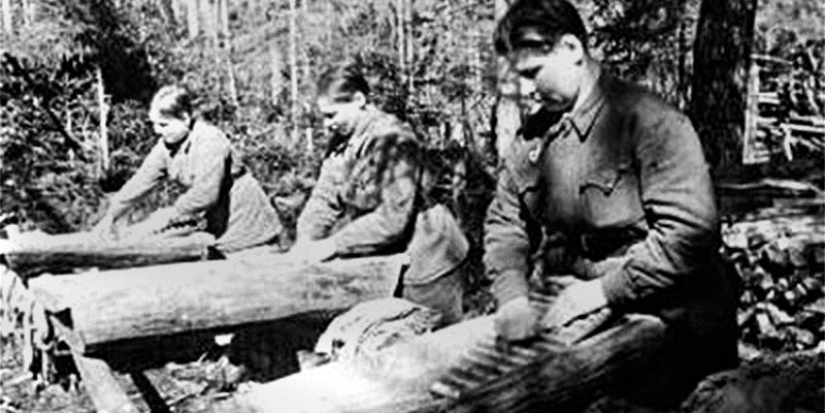
If possible, we used automobile steam-air chambers for disinfection. In them, the laundry was disinfected with formaldehyde vapors.
Some bath and laundry detachments were organized right on the trains. This solved the problem with hot water, light and housing. However, most often the detachments moved after the army — to where there was no railway. The water was boiled on bonfires, and washed where necessary. Torn or pierced by bullets and shrapnel, underwear was repaired on the spot or sent to the rear, where it was darned and given out again.
Who is older, do you remember what were the days of washing before the arrival of automatic washing machines in our lives? There is a huge tank of boiling water on the stove. Clothes are boiled, and then sent to an open-type washing machine or even washed by hand for several hours in the bathroom. The most difficult stains are washed on a corrugated washboard. Then the laundry is squeezed out — there is not always enough female strength here — and hung on ropes to dry. Steam, dampness, water everywhere. And this is the usual washing of a simple Soviet family.
And now imagine everyday life in the bath and laundry squad.
Hard, physically harmful, hellishly exhausting work. Twisting the drum handle, carrying boiling water and washing by hand had to take days. In summer it's easier, in winter it's generally a disaster. Fingers worn to bloody calluses, not bent from arthritis, skin corroded by lye. Regular colds.
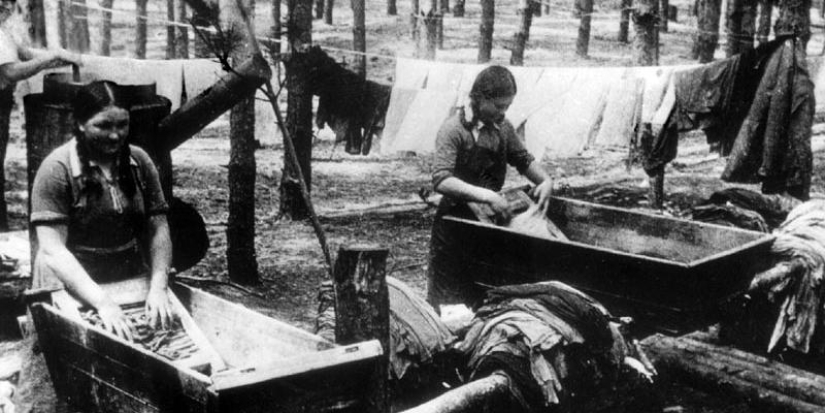
Human memory is too short to remember that. Therefore, more and more often, ideas appear in the inflamed brains of contemporaries that bath and laundry squads are cunningly disguised brothels. These ideas are so far from the hard reality that it is difficult even to explain.
It just so happened that after the war, these humble workers were undeservedly forgotten. There are no films or books about bath and laundry plants. But the women who worked in them followed the soldiers all the way to Berlin. Erasing, erasing and erasing. And the next time you read that it would be good to wear a clean shirt before you die, remember where this shirt came from.
Recent articles

The celebrities we are used to seeing on the screen or in history textbooks, outside of all this hype around, are ordinary people. ...

At the beginning of their career, many actors grab any role – just to light up on the screen. And then, years later, when they ...

Arabic writing is very different from Cyrillic and Latin. And this difference is not only in the form of the letters themselves. In ...